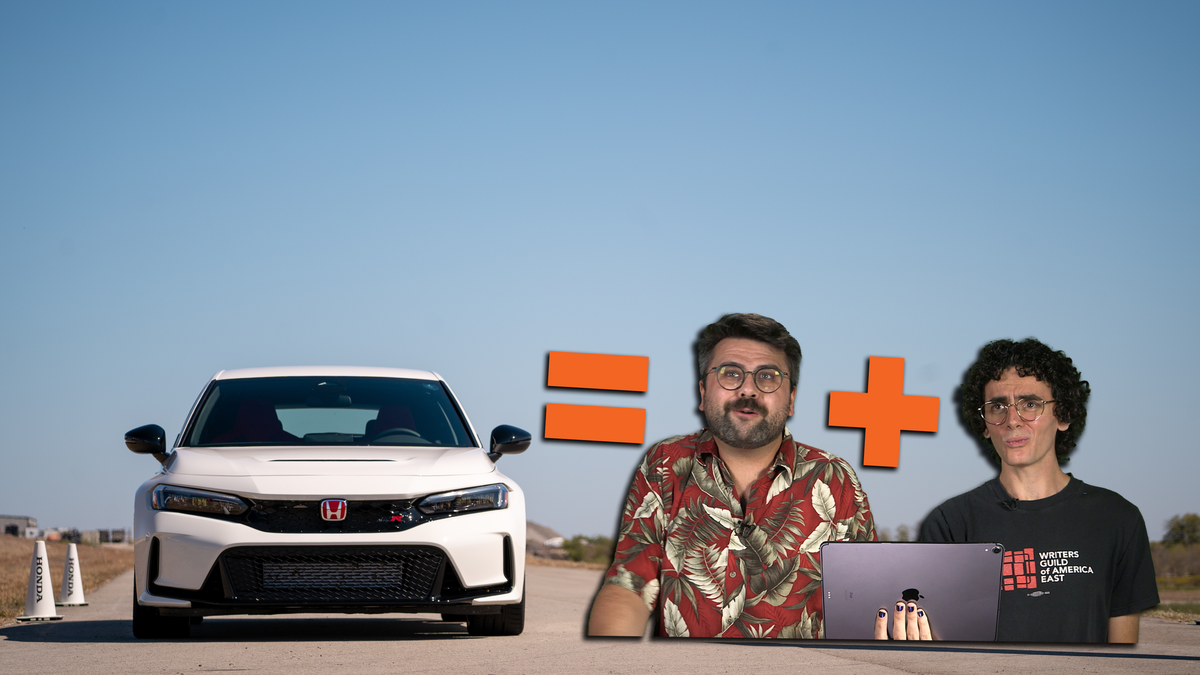[ad_1]
Earlier this year, the writers and editors of this fine network of websites took a few days away from posting. In that time, we found new camaraderie between our sites — from the car folks of Jalopnik to the 1337 64/\/\3|25 of Kotaku, we forged bonds that to this day remain unbroken. We also, through the fires of weekend alcohol influence, forged new ideas.
One night, while celebrating the week’s successes at a local bar, I ended up in a debate with Shoshana Wodinsky (then of Gizmodo) about the nature of automotive faces. In the midst of that heated exchange, though, a burst of true genius hit my body like lightning: Cars are two people.
This, as you may already know, is a car. In fact it’s a very good car, a Civic Type R, but that’s not really the point. The point is that it is also, clearly and identifiably, a Guy. A friend, a dude, a person with a face, whatever you want to call it. We, as human beings, look at its headlights and agape grille and see a face looking back at us. It’s a phenomenon called pareidolia, in which the human mind identifies patterns in otherwise random information. Our brains didn’t evolve alongside cars for millennia, so our prefrontal and occipital cortices convert this assembly of metal, plastic, and lights into something that our gray matter gets: A face.
After all, we’ve coexisted with humans for longer than cars [citation needed]. In order to quickly intuit what a car’s Whole Deal is, our brains take a shortcut — and in doing so, giving cars happy little faces. Or angry ones, depending on how the headlights are shaped.
Studies have suggestedthat face pareidolia is a result of the “survival value” of quickly identifying and interpreting human faces. On occasion, humans are known to bump into other humans, and being able to see that they have a face (if they don’t, you should probably leave) as well as what’s on their face (happy expressions, angry expressions, a headcrab) helps in understanding what’s going on. At least, that’s what a study in Psychological Science says:
[…]This is evidence that pareidolia objects not only resemble faces to us, in a cognitive or mnemonic sense, but also are processed by higher-level sensory mechanisms in our visual system that have developed to extract and encode specific social content from human faces.
So, it’s not just you that sees faces in headlights and grilles. It’s a byproduct of evolution, your brain looking at something it doesn’t really understand and finding the next-closest parallel that it knows to be useful information. Your mind sees a car’s front bumper, and interprets a Guy.
But that’s only one person. I said two people, didn’t I?
That’s right. Hidden in plain sight, on the rear of your car, a second little guy.
The front of your car has two eyes, a mouth, and two tires as feet. Why shouldn’t the back of your car, with all the same features, strike the same pareidolia chord in your head?
Next time you’re out back of your own car, look for the little guy in the tail lights and trunk lid. Go up to him, say hi, shoot the shit for a while. I’m sure he’d love to meet you.
[ad_2]
Source link
